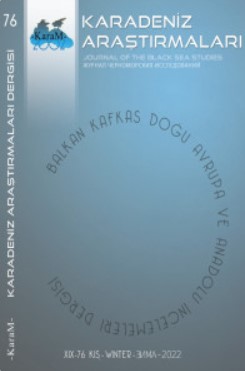SERİ FİİL-BİRLEŞİK FİİL İLİŞKİSİ VE TÜRKÇEDEKİ GÖRÜNÜMÜ
THE RELATIONSHIP BETWEEN SERIAL VERBS AND COMPOUND VERBS AND ITS APPEARANCE IN TURKISH
Author(s): Abdullah ÇİĞİLSubject(s): Syntax, Descriptive linguistics, Turkic languages
Published by: Karadeniz Araştırmaları Merkezi
Keywords: Serial Verb Construction; Compound Verb; Verb;
Summary/Abstract: Serial verb constructions (SVC) were first identified in African languages. They are formed by the succession of two verbs without any conjunction or connection element similar to compound verbs. Scholars initially thought that SCVs were a kind of compound. Alas, we now know they differ in a number of key ways from compound verbs. In this study, we shall examine the relationship between SVC and compound verb sin Modern Turkish. Our main goal is to emphasize that one is a continuation of the other. We think that certain kinds of Turkish compound verbs (i.e. double, modal auxiliary, and semi-descriptive verbs alongside compound verbs formed using modal suffixes) may in fact be SVC. Particularly, the similarities between the descriptive verbs and the asymmetric SVC in how they get formed in the second verb gains the auxiliary verb feature by being grammatical – may add a different dimension to scholarly discussions on descriptive verbs. Examples from spoken Turkish that illustrate this include kaç git, kap gel, gel al, and al git. One quickly begins to notice how difficult it can get evaluate SVC examples within the framework of compounds. In addition, certain verb forms viewed as SVC compound nouns (e.g. kapkaç, kaçgöç, çekyat, gelgit) offer us important clues as to just how close compound verbs and SVCs are to one another.
Journal: Karadeniz Araştırmaları
- Issue Year: 2022
- Issue No: 76
- Page Range: 1179-1197
- Page Count: 19
- Language: Turkish

